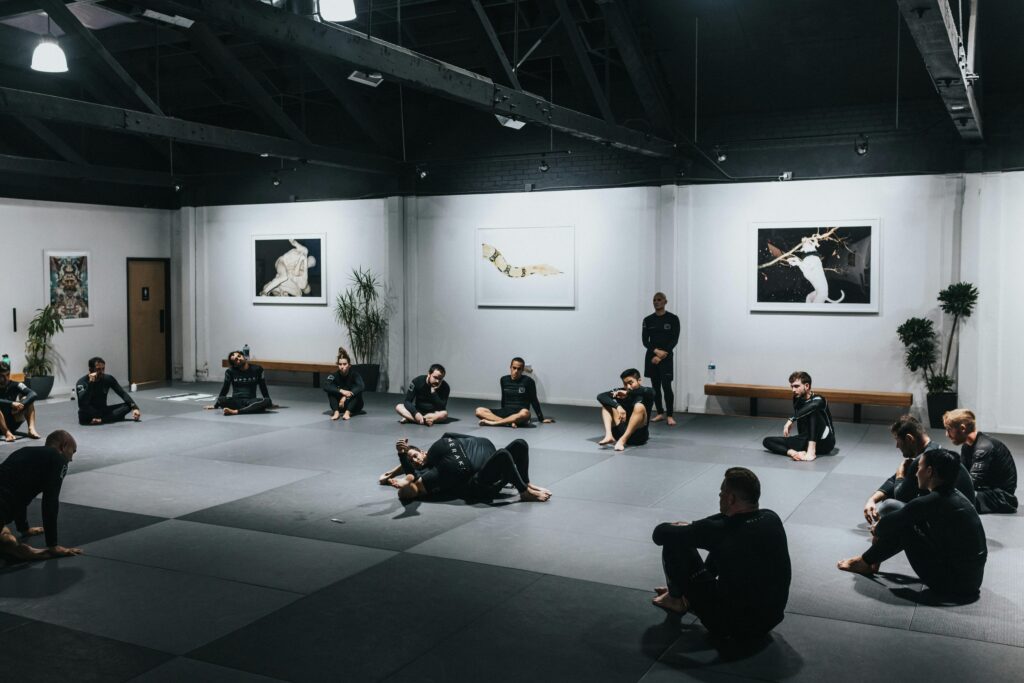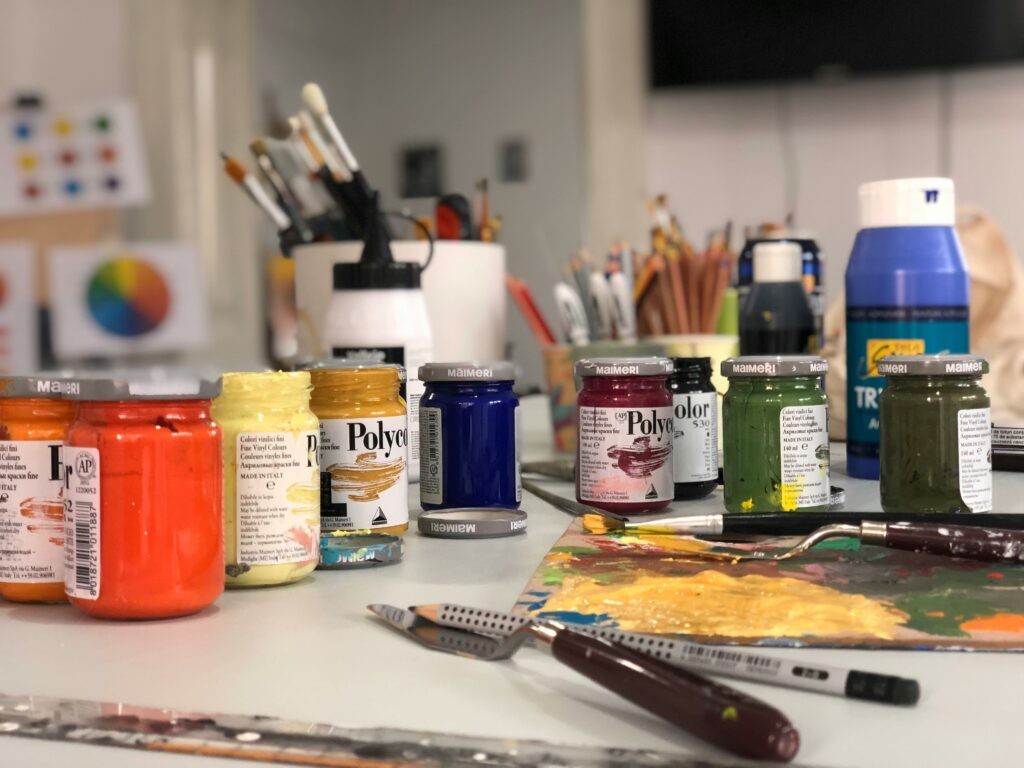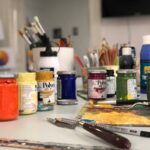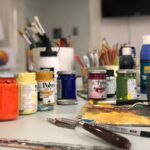Now Reading: Creative Expression for Addiction Recovery: Healing Through Art and Emotion
-
01
Creative Expression for Addiction Recovery: Healing Through Art and Emotion
Creative Expression for Addiction Recovery: Healing Through Art and Emotion

Addiction recovery is not just about stopping substance use—it’s about rediscovering yourself. Healing involves rebuilding what was lost and finding healthy ways to express feelings. One powerful and often overlooked tool in recovery is creative expression.
Whether through drawing, painting, writing, music, or movement, creative expression for addiction recovery allows people to reconnect with their emotions, reduce stress, and heal past wounds. You don’t have to be an artist to benefit. All you need is a willingness to explore what’s inside.
In this article, we’ll look at how creative expression supports healing, builds emotional awareness, and strengthens recovery.
Why Creative Expression Matters in Recovery
Addiction often masks pain. People may turn to substances to numb emotions, escape trauma, or silence their inner voice. Over time, this leads to disconnection—from self, others, and even reality.
Creative expression for addiction recovery helps bridge that gap. It offers a safe, non-judgmental space to explore difficult feelings, release built-up stress, and give shape to experiences that words can’t always capture.
According to the American Art Therapy Association, engaging in creative activities like drawing or painting can increase self-awareness, lower anxiety, and support emotional growth—all essential for sustainable recovery 1.
The Benefits of Creative Expression in Recovery
1. Reconnecting With Emotions
Many people in recovery struggle to identify or express their emotions. This emotional disconnect can be a major trigger for relapse. Creative expression helps individuals access feelings they may have buried for years.
Drawing, painting, or journaling provides a safe outlet to express:
- Anger or frustration
- Grief and loss
- Shame and guilt
- Hope and healing
A 2016 study in Art Therapy: Journal of the American Art Therapy Association found that even one session of art-making significantly improved participants’ ability to express emotions and reduced negative mood 2.
2. Reducing Stress and Anxiety
Recovery can be overwhelming, especially in early stages. Creative expression gives the brain a break from overthinking and stress. It shifts focus from worry to the present moment.
Simple acts like coloring, sketching, or molding clay can lower cortisol levels—the body’s main stress hormone. These calming activities soothe the nervous system and help regulate mood.
In a 2018 study published in Arts & Health, researchers observed that 45 minutes of art-making significantly reduced stress and increased positive emotions in adults, regardless of artistic skill 3.
3. Boosting Self-Esteem and Confidence
Addiction often damages self-worth. Many people in recovery feel ashamed, broken, or hopeless. Creating something—no matter how small—offers a sense of accomplishment.
Creative expression for addiction recovery allows people to see their progress, literally and figuratively. It shifts focus from mistakes to strengths.
Whether it’s finishing a painting or writing a poem, each act of creation reminds individuals, “I can do this.” That message carries over into other areas of life, strengthening commitment to sobriety.
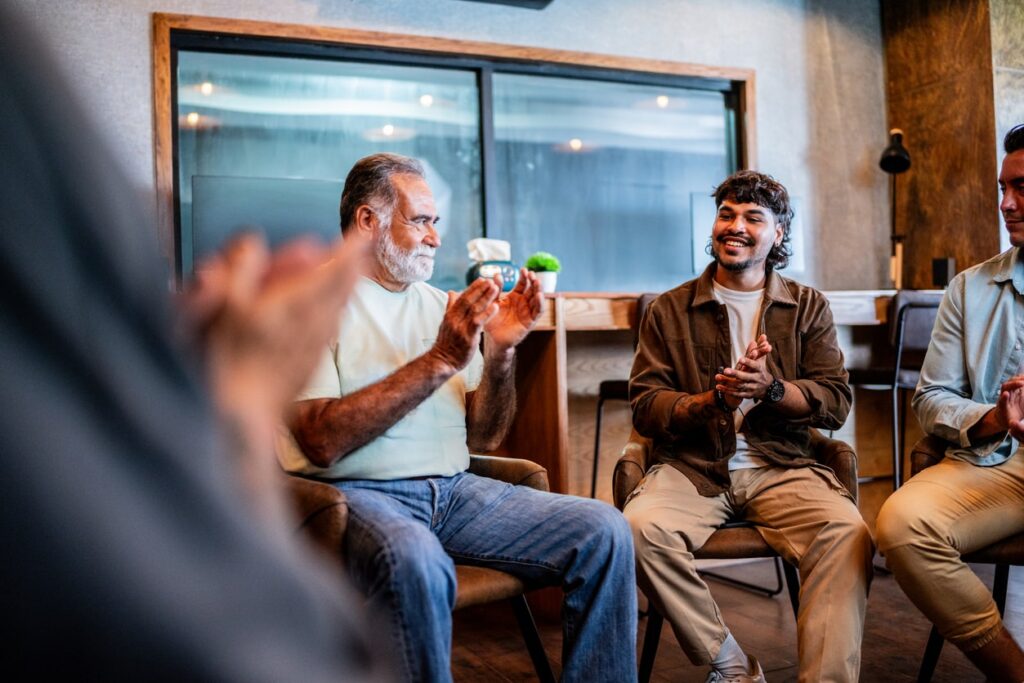
4. Promoting Mindfulness and Presence
Mindfulness is a key component of many recovery programs. It helps individuals stay grounded and aware of their thoughts, feelings, and surroundings.
Art and creativity naturally promote mindfulness. When you focus on colors, lines, or textures, your mind quiets. You enter a flow state—fully present and engaged.
This awareness helps manage cravings and reduces impulsivity. A 2021 review in Substance Use & Misuse found that integrating creative expression into treatment enhanced mindfulness and improved emotional regulation 4.
5. Providing a Safe Outlet for Trauma
For many, addiction is rooted in trauma. Talking about trauma can be painful and overwhelming. Creative expression offers a gentler way to explore those experiences.
Art therapy allows individuals to express trauma through symbols, metaphors, and images. This process helps people gain insight, release pain, and begin the journey toward emotional healing.
According to the Substance Abuse and Mental Health Services Administration (SAMHSA), trauma-informed creative approaches support safer emotional processing in recovery settings 5.
Ways to Use Creative Expression at Home
You don’t need expensive tools or a therapist to begin using creative expression for addiction recovery. Here are simple ways to start:
1. Emotion Drawing
Take a few minutes to draw how you feel. Use shapes, colors, and lines to express your emotions without judgment.
2. Art Journaling
Combine drawing, writing, and collage in a notebook. Reflect on your day, dreams, fears, or goals through creative entries.
3. Recovery Vision Boards
Cut out pictures, words, or images that represent your recovery journey and create a visual goal map.
4. Doodle Breaks
Use short art breaks throughout the day to manage stress or ground yourself during emotional moments.
5. Create in Nature
Use leaves, stones, or twigs to build something meaningful. Nature-based art deepens connection and calms the mind.
Group Art Therapy and Support
Many addiction treatment centers now offer art therapy or creative expression groups as part of their programs. These sessions are guided by trained therapists who use creativity to explore themes like identity, coping, and healing.
In group settings, art helps build trust and connection. It allows participants to share without needing to speak and strengthens the sense of community—an essential factor in recovery success.
A 2020 study in Frontiers in Psychology showed that group creative therapy reduced depression and loneliness and improved engagement in treatment programs 6.
Real-Life Story: Healing Through Drawing
Carlos, a 38-year-old in recovery from alcohol use, began drawing during his outpatient program.
“I didn’t know what to say in group therapy, but I could draw what I felt. Sometimes it was just scribbles, sometimes it was faces. It helped me see things I didn’t even know were inside me. Drawing became my daily check-in. It gave me peace.”
Carlos’s story is not unique. Many people find healing not through words—but through shapes, lines, and colors.
Final Thoughts: Express to Heal
Recovery isn’t just about stopping something harmful—it’s about starting something healing. Creative expression for addiction recovery offers a powerful way to reconnect with yourself, process pain, and find joy in the process of creating.
You don’t need to be good at art. You only need to be honest, curious, and willing to explore.
So pick up a pencil. Grab a journal. Make space to create. Healing begins where words end—and where expression takes over.
Sources
- American Art Therapy Association. (2023). What is Art Therapy? [https://arttherapy.org] ↩
- Kaimal, G., Ray, K., & Muniz, J. (2016). Art Making and Emotional Expression. Art Therapy Journal. ↩
- Walsh, R., & Gale, C. (2018). The Effects of Art on Stress. Arts & Health. ↩
- Li, W., et al. (2021). Creative Interventions in Recovery. Substance Use & Misuse. ↩
- SAMHSA. (2022). Trauma-Informed Approaches in Substance Use Treatment. [https://samhsa.gov] ↩
- Stuckey, H. L., & Nobel, J. (2020). Creativity and Community in Recovery. Frontiers in Psychology. ↩

Jen Sheldon is a seasoned writer with a passion for fitness, health, wellness, and addiction treatment. With years of experience crafting insightful and research-backed content, she helps readers navigate their journey toward better well-being. When she’s not writing, you’ll find her exploring new workout routines or diving into the latest health trends.











